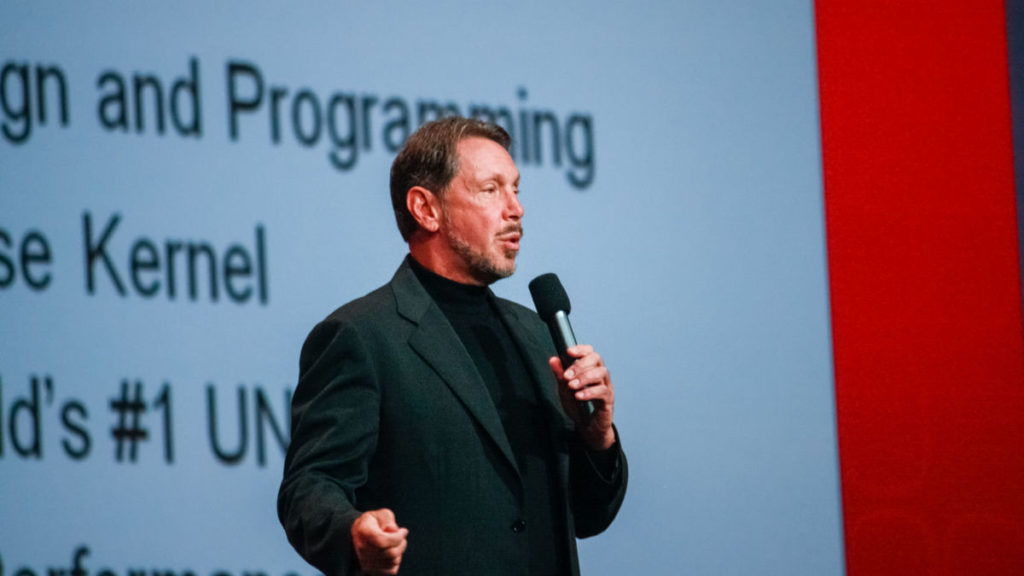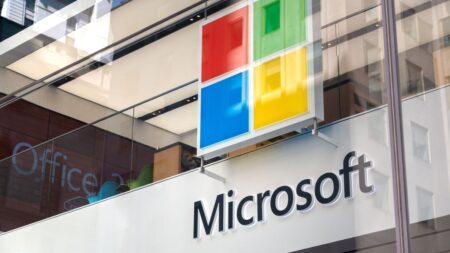
Whether you consider them frenemies, BFFs, archrivals, or simply extraordinary leaders competing in the same industry, Larry Ellison and Marc Benioff are ending 2022 on astonishingly different trajectories.
For the supremely confident Benioff, who never met a high-profile issue for which he didn’t have an opinion, Salesforce is wrapping up what had been looking like a very strong year in disarray, disappointment, and even a touch of disillusionment:
- Growth rate plummets: Its fiscal Q3 revenue growth rate tumbled to 14% after coming in at 20% or higher for more than 20 straight quarters;
- Top-level executives bail: The disastrous simultaneous departures of co-CEO Bret Taylor and Slack CEO Stewart Butterfield revealed deep fissures in what Benioff terms the Salesforce “ohana”; and
- Market-cap matched by SAP? Salesforce’s troubles have hammered its market cap, which for the last few weeks has been at or near two-year lows. As of yesterday afternoon, Salesforce’s market cap was $128.5 billion, while SAP’s has climbed to $123.3 billion as SAP, like Oracle, is in ascent while Salesforce struggles. Meanwhile, Oracle’s market cap of $218.6 is now 70% higher than Salesforce’s.
- Is WFH wonderful or terrible? In the early days of the pandemic, Benioff was a very vocal champion of remote work and was unrestrained in his claims about how the world would “never go back” to prior norms and praised the productivity of his company’s remote workers. But a week ago, Benioff fired off a Slack message saying the company’s remote employees hired in the past 2 years simply aren’t productive enough.
Conversely, over at Oracle — the company Benioff has skewered repeatedly over the past several years for not getting the cloud — business is booming and morale, at least according to founder and chairman Ellison, is flourishing. Here are a few highlights of Oracle’s widespread momentum that serve as counterpoints to the troubling situation at Salesforce:
- Morale rising around “healthcare mission.” At Oracle CloudWorld several weeks ago, Ellison described the new sense of purpose that’s arisen within Oracle around its commitment to transforming and automating the entire healthcare system. “It’s about saving lives,” Ellison said. “And that’s fundamentally the quest, the new mission Oracle’s adopted. And it has fundamentally transformed the culture at Oracle. I think people at Oracle are proud of taking on this huge challenge.”
- Revenue and growth rates rising in the cloud. Check out the five primary drivers behind Oracle’s hypergrowth in the cloud that I shared in a recent analysis. Those five pillars showcase a company that is fundamentally sound, technologically advanced, and culturally attuned to the new ways of meeting and exceeding customer expectations in the cloud.
- Huge cloud infrastructure deals are rolling in. Although it has very intentionally chosen to compete with the trillion-dollar trio of Amazon, Microsoft, and Google in cloud infrastructure, Oracle’s OCI business grew last quarter at 53%. And on Oracle’s Dec. 12 earnings call, Ellison said the momentum is only starting to build as “multiple customers” in the quarter ended Nov. 30 “signed contracts for $1 billion or more in cloud infrastructure. “So given that that’s been added to our backlog, we expect our infrastructure business to continue to grow very, very strongly into the future.” He added that Oracle now has 22,000 infrastructure customers.
- Oracle’s SaaS business is growing much faster than Salesforce’s. Oracle’s SaaS (software-as-a-service) business is growing 2X or 3X faster than Salesforce’s 14% rate. It’s 2X faster without the inclusion of Cerner revenue, and 3X when Cerner’s numbers are added in.
- Extreme stability rather than shocking melodrama in CEO office. Last week, I named Oracle CEO Safra Catz as the Cloud Wars CEO of the Year for 2022 for driving all of the accomplishments noted above. Catz and Ellison have worked closely together for 23 years and that extraordinary partnership has been a big factor in Oracle’s transition into a high-growth cloud powerhouse.
Final Thought
While every company has its ups as well as its downs, this latest display of the fleeting and temporary nature of market leadership is a striking example of why Larry Ellison always plays the long game, and also of why Benioff’s past criticisms of Oracle have aged about as well as milk in the hot sun.
Because, as I noted in the headline, who’s got the cool company now?
To see more Cloud Wars content, including all recorded sessions from June’s live Cloud Wars Expo, please register here for your Cloud Wars Expo on-demand pass. The on-demand pass, which is included with your Acceleration Economy subscription, gives you access to approximately 40 hours of invaluable educational content.









